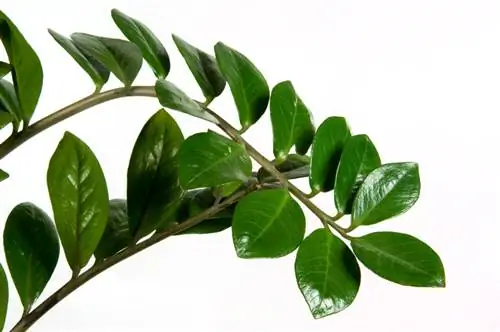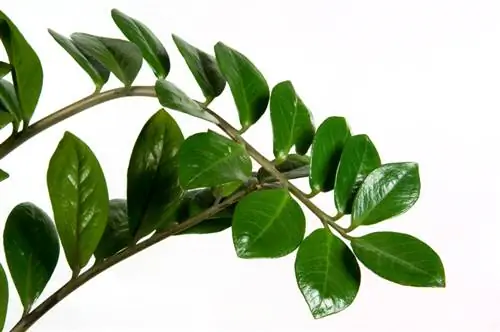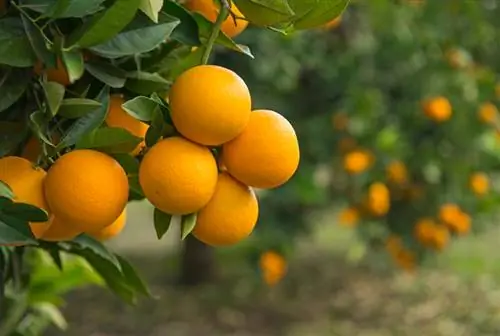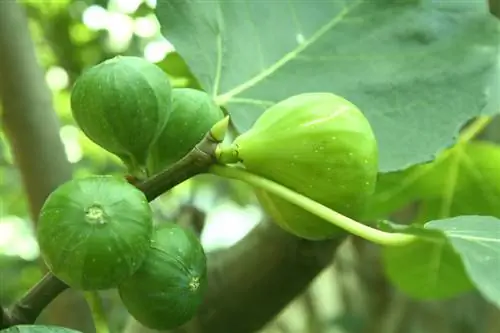- Author admin [email protected].
- Public 2023-12-16 16:46.
- Last modified 2025-06-01 06:02.
Nutrients are essential for plants to live. They absorb them from the substrate via the roots, but are only available to a limited extent in a container culture. That's why houseplants like Zamioculcas zamiifolia rely on a regular and correct supply of fertilizer

How should you fertilize Zamioculcas properly?
To ideally fertilize Zamioculcas, use a foliage fertilizer that supports leaf growth. Apply liquid fertilizer every four weeks or slow-release fertilizer according to the manufacturer's instructions. Do not fertilize in winter and only fertilize sick or newly repotted plants after a while.
Fertilizer types and forms - advantages and disadvantages
Zamioculcas needs a colorfully mixed nutrient cocktail to grow and thrive. The leaf plant needs larger quantities of the main nutrients nitrogen, phosphorus and potassium. Other nutrients such as iron or manganese, on the other hand, are only required in smaller doses. They are also known as trace elements. These nutrients must be in a balanced ratio to each other, otherwise growth disorders can occur. Foliage plants like Zamioculcas require a good foliage fertilizer that preferably supports leaf growth. You can use either short-term or long-term fertilizer:
- With short-term mineral fertilizers, the nutrients can be absorbed by the plants immediately, but are also used up quickly. Therefore, such fertilizers must be added at regular intervals, which applies to most liquid fertilizers. These are added to the irrigation water and quickly reach the roots.
- With long-term fertilizers, the nutrients only become available to the plants gradually, but for a longer period of time. Their advantage is that fertilization is rarely necessary. They are usually administered as granules that are mixed into the substrate or as easy-to-use fertilizer sticks or drops that you simply press into the soil.
Dose and fertilize correctly
The Glücksfeder is optimally supplied with a liquid complete fertilizer (€8.00 on Amazon) for green plants or a corresponding long-term fertilizer. Liquid fertilizer should be administered approximately every four weeks. When it comes to dosage, follow the manufacturer's instructions exactly and mix the fertilizer solution too weakly rather than too strongly. Stick to the tried and tested rule that it is better to fertilize often, sparingly, rather than rarely in high concentrations. Always apply the fertilizer only into the substrate; any splashes that accidentally get on the leaves should be rinsed off immediately with plenty of clean water.
When you shouldn't fertilize
Sometimes fertilization does more harm than good. For example, freshly repotted plants only receive their first fertilizer application after six to eight weeks - at the earliest. Until then, they feed on the supplies available in the fresh substrate. Sick and pest-infested plants are also not fertilized. Only when they are he althy again do you gradually increase the fertilizer doses. Even fresh cuttings remain unfertilized because they cannot absorb any nutrients yet. Even in winter there is no fertilization.
Tip
In the event of over-fertilization, unpot the lucky feather, remove as much of the over-fertilized soil as possible and then reinsert the plant into fresh substrate.






